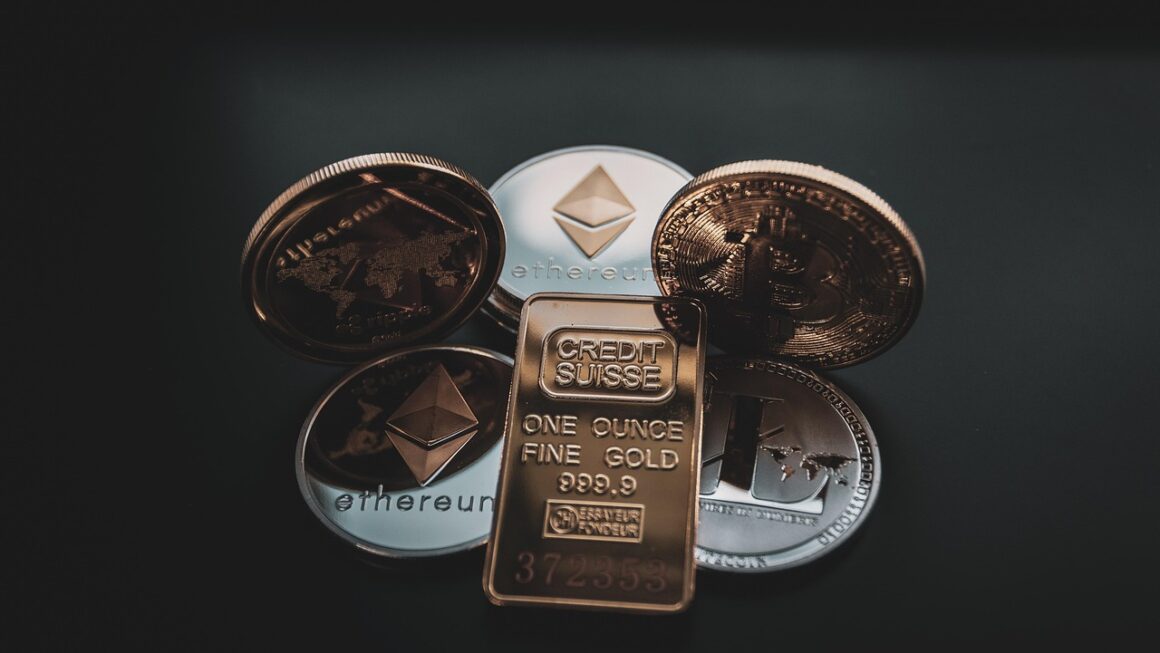Altcoin trading can feel like navigating a complex maze filled with both incredible opportunities and potential pitfalls. The cryptocurrency market extends far beyond Bitcoin, encompassing a vast and ever-evolving ecosystem of alternative cryptocurrencies, or altcoins. This guide will provide you with a comprehensive understanding of altcoin trading, equipping you with the knowledge and strategies needed to navigate this dynamic landscape successfully. Whether you’re a seasoned trader looking to diversify or a newcomer eager to explore the world of altcoins, this post will serve as your essential roadmap.
Understanding Altcoins and Their Market Dynamics
What Exactly are Altcoins?
Altcoins are essentially any cryptocurrency that isn’t Bitcoin. The term “altcoin” is a portmanteau of “alternative coin.” These cryptocurrencies emerged to address perceived limitations of Bitcoin, offer novel features, or serve niche purposes.
- Examples of Altcoin Categories:
Layer-1 Protocols: Cryptocurrencies that act as foundational blockchain networks, like Ethereum (ETH), Solana (SOL), and Cardano (ADA). They aim to improve upon Bitcoin’s scalability, transaction speed, or consensus mechanisms.
Stablecoins: Cryptocurrencies pegged to a stable asset, such as the US dollar (e.g., USDT, USDC). They provide price stability, making them useful for trading and payments.
Meme Coins: Cryptocurrencies born from internet memes or trends, often characterized by high volatility and community-driven hype (e.g., Dogecoin (DOGE), Shiba Inu (SHIB)).
Decentralized Finance (DeFi) Tokens: Tokens associated with decentralized financial applications, such as lending platforms, decentralized exchanges (DEXs), and yield farming protocols (e.g., AAVE, UNI, COMP).
NFTs: Digital assets that represent ownership of unique items, such as art, music, or virtual land (though the cryptocurrencies powering NFT marketplaces or associated with NFT projects are often considered altcoins).
Market Capitalization and Liquidity Considerations
Before diving into altcoin trading, it’s crucial to understand market capitalization and liquidity.
- Market Capitalization: This is calculated by multiplying the current price of an altcoin by its circulating supply. A higher market capitalization generally indicates a more established and stable altcoin.
- Liquidity: This refers to how easily an altcoin can be bought or sold without significantly affecting its price. Altcoins with low trading volume often have lower liquidity, making them more susceptible to price manipulation and slippage (the difference between the expected price of a trade and the price at which the trade is executed).
- Example: A low market cap coin might be easily influenced by a single large purchase or sale. This volatility can be attractive to some, but represents a significant risk. High liquidity allows for larger trades to occur without drastically impacting the price.
- Actionable Takeaway: Prioritize altcoins with relatively higher market capitalization and liquidity, especially when starting out. This helps mitigate risk and ensures easier entry and exit from trades.
Strategies for Profitable Altcoin Trading
Technical Analysis: Chart Patterns and Indicators
Technical analysis involves analyzing historical price data and trading volume to identify patterns and predict future price movements.
- Key Technical Indicators:
Moving Averages (MA): Used to smooth out price data and identify trends. For example, a 50-day moving average crossing above a 200-day moving average is often seen as a bullish signal (a “golden cross”).
Relative Strength Index (RSI): Measures the magnitude of recent price changes to evaluate overbought or oversold conditions in the price of an asset. An RSI above 70 typically indicates an overbought condition, while an RSI below 30 suggests an oversold condition.
Moving Average Convergence Divergence (MACD): A trend-following momentum indicator that shows the relationship between two moving averages of a security’s price. Crossovers, divergences, and histograms can provide potential buy or sell signals.
Fibonacci Retracements: Used to identify potential support and resistance levels based on Fibonacci ratios.
- Chart Patterns:
Head and Shoulders: A bearish reversal pattern that signals a potential downtrend.
Double Top/Bottom: Patterns that suggest a potential reversal of an uptrend (double top) or downtrend (double bottom).
Triangles: Indicate periods of consolidation that can lead to breakouts in either direction (ascending, descending, or symmetrical triangles).
- Example: If an altcoin’s price consistently bounces off a support level identified using Fibonacci retracements and shows a bullish RSI divergence (price making lower lows while RSI makes higher lows), it could indicate a potential buying opportunity.
Fundamental Analysis: Researching Altcoin Projects
Fundamental analysis involves evaluating the intrinsic value of an altcoin based on various factors, such as its technology, team, use case, and adoption rate.
- Key Areas to Research:
Whitepaper: This document outlines the project’s goals, technology, and tokenomics (the economics of the token, including its supply, distribution, and utility).
Team: Assess the team’s experience, expertise, and track record. Look for transparency and active community engagement.
Technology: Understand the underlying technology and its potential advantages over existing solutions. Is it truly innovative, or is it just a copy of existing technologies?
Use Case: Determine the real-world problem that the altcoin aims to solve. Is there a genuine need for its solution?
Community: Evaluate the strength and engagement of the project’s community. A strong and active community can be a positive sign of long-term viability.
Tokenomics: Analyze how the token is distributed, what its utility is within the project, and how it is designed to incentivize participation.
- Example: Before investing in a DeFi token, research the platform’s security audits, total value locked (TVL), and user base. A platform with a strong security track record and growing TVL is generally a more promising investment.
- Actionable Takeaway: Combine technical and fundamental analysis for a more comprehensive trading strategy. Technical analysis can help identify potential entry and exit points, while fundamental analysis can help you choose which altcoins to trade in the first place.
Risk Management Strategies for Altcoin Trading
Position Sizing and Stop-Loss Orders
Altcoin trading can be highly volatile, so effective risk management is crucial to protect your capital.
- Position Sizing: Determine the appropriate amount of capital to allocate to each trade based on your risk tolerance and account size. A common rule of thumb is to risk no more than 1-2% of your total trading capital on any single trade.
- Stop-Loss Orders: Automatically close a trade when the price reaches a predetermined level, limiting your potential losses. Setting stop-loss orders is essential for managing risk in volatile markets.
- Example: If you have a $10,000 trading account and are willing to risk 1% per trade, you would risk $100 per trade. If you enter a trade with a stop-loss order 5% below your entry price, you would size your position so that a 5% loss would result in a $100 loss.
Diversification and Portfolio Allocation
- Diversification: Spreading your investments across multiple altcoins can help reduce risk. Avoid putting all your eggs in one basket.
- Portfolio Allocation: Determine the appropriate allocation of your portfolio to different asset classes, including altcoins, based on your risk tolerance and investment goals.
- Example: Instead of investing all your capital in a single altcoin, consider allocating a portion to established layer-1 protocols, a portion to stablecoins, and a smaller portion to higher-risk, higher-reward DeFi tokens.
- Actionable Takeaway: Implement strict risk management strategies, including position sizing, stop-loss orders, and diversification, to protect your capital and mitigate potential losses.
Choosing the Right Exchange and Tools
Selecting a Reputable Exchange
- Factors to Consider:
Security: Prioritize exchanges with robust security measures, such as two-factor authentication (2FA), cold storage of funds, and regular security audits.
Liquidity: Choose exchanges with high trading volume and liquidity for the altcoins you want to trade.
Fees: Compare trading fees across different exchanges. Look for exchanges with competitive fee structures.
Altcoin Selection: Ensure the exchange offers a wide selection of altcoins that you are interested in trading.
User Interface: Select an exchange with a user-friendly interface that is easy to navigate.
Customer Support: Opt for exchanges that offer responsive and helpful customer support.
- Examples: Binance, Coinbase, Kraken, and KuCoin are popular exchanges that offer a wide selection of altcoins and various trading features. However, be sure to do your own research and choose an exchange that aligns with your specific needs and preferences.
Essential Trading Tools and Resources
- Charting Platforms: TradingView is a popular platform that provides advanced charting tools, technical indicators, and real-time market data.
- Portfolio Trackers: Blockfolio (now FTX) and CoinGecko are popular portfolio tracking apps that allow you to monitor your altcoin investments.
- News Aggregators: CoinDesk and CoinTelegraph provide up-to-date news and analysis on the cryptocurrency market.
- On-Chain Analytics: Tools like Nansen and Glassnode provide insights into blockchain data, such as transaction volumes, wallet activity, and network health.
- Actionable Takeaway: Choose a reputable exchange with strong security, liquidity, and a wide selection of altcoins. Utilize essential trading tools and resources to stay informed and make data-driven decisions.
Staying Informed and Adapting to Market Changes
Following Industry News and Trends
The cryptocurrency market is constantly evolving, so it’s essential to stay informed about the latest news and trends.
- Key Sources of Information:
Cryptocurrency News Websites: Stay up-to-date with the latest news and analysis from reputable cryptocurrency news websites, such as CoinDesk, CoinTelegraph, and The Block.
Social Media: Follow prominent cryptocurrency influencers, analysts, and project teams on Twitter and other social media platforms.
Community Forums: Participate in online communities and forums, such as Reddit’s r/CryptoCurrency, to engage with other traders and learn from their experiences.
Project Announcements: Keep track of project announcements, such as new partnerships, technology upgrades, and token burns, which can significantly impact altcoin prices.
Adapting Your Strategy Based on Market Conditions
- Bull Market: During bull markets (periods of rising prices), consider focusing on altcoins with strong momentum and potential for high growth.
- Bear Market: During bear markets (periods of falling prices), consider reducing your exposure to altcoins and focusing on stablecoins or established cryptocurrencies.
- Sideways Market: During sideways markets (periods of price consolidation), consider using range-bound trading strategies, such as buying at support levels and selling at resistance levels.
- Example: If a major regulatory announcement causes a sharp drop in the price of an altcoin, reassess your investment thesis and consider adjusting your position size or stop-loss order.
- Actionable Takeaway: Continuously monitor the market, stay informed about industry news and trends, and adapt your trading strategy based on changing market conditions.
Conclusion
Altcoin trading presents both significant opportunities and inherent risks. By understanding the dynamics of the altcoin market, implementing effective trading strategies, managing risk diligently, and staying informed about industry developments, you can increase your chances of success. Remember that consistent learning, adaptation, and a disciplined approach are crucial for navigating the complexities of altcoin trading and achieving your financial goals. Start small, stay patient, and always prioritize risk management.




